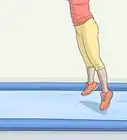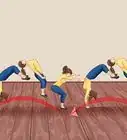This article was co-authored by Landis Owens. Landis Owens is a Personal Trainer and the Owner of Almighty Personal Training Studio in Tempe, Arizona. With over 15 years of experience in the health and fitness industry, Landis specializes in weight loss, nutrition, and core and strength training. Landis received a football scholarship to Mesa Community College where he studied Engineering and Sports and Exercise. He is an ISSA Certified Personal Trainer and also holds certifications in Nutrition, Youth Sports, Injury Stay Free, and CPR. Landis also competes in bodybuilding competitions.
This article has been viewed 786,068 times.
The back walkover is a very impressive gymnastics move that takes a lot of talent and control. You should be sure that you master the backbend and the backbend kick over before you try this exercise to be sure that you have all the skills you need for it.[1] Be sure to have a spotter when you first try this exercise, then work up to doing it on your own.
Steps
Going into your One-Legged Backbend
-
1Raise your arms and extend your dominant leg. Raise your arms straight above your head. Fully extend your dominant leg straight out in front of you, keeping the other leg straight beneath you.. Stand tall and engage your core muscles.[2]
- If you are starting with a spotter, they should put one hand on your back, and one hand under the thigh of your kicking leg.
-
2Start bending backwards. Point your palms upwards and push your hips forward. Push your arms and head backwards, making sure that you move them together. Bend your back slowly and carefully, keeping your dominant leg in position.[3]
- Keep your abdominal muscles tight so that you can keep control of your core as you bend backwards.
- Make sure to balance your weight firmly on the one leg that is on the ground.
- Do not bend you knees or elbows just yet.
Advertisement -
3Land on your hands. Bend your hands so that your fingertips point towards the ground. Make contact with the mat underneath you and plant your hands onto the ground. Allow your weight to shift onto your hands.[4]
Completing the Walkover
-
1Push your shoulders over your hands. Once you are in a bridge, push your body upwards towards your shoulders. Move your body until your shoulders are over your hands. This will help to shift your weight over your hands and make it easier to do the walkover.[5]
-
2Push up into a split position. Push away from the floor with the foot that is planted on the ground. Keep both legs straight and bring yourself into a split handstand position. Shift your weight onto your hands.[6]
- In a split handstand position, your legs should be held in a perfect horizontal line above the rest of your body.
-
3Hold your position firmly. Proper execution of a back walkover means maintaining good form throughout the exercise. Once your legs are off the ground, point your toes. Keep your legs straight.[7]
-
4Follow through and land. Keeping your legs straight, push through the walk over. Land on your lead leg first, carefully shifting your weight onto it. Plant your other leg right after in a fluid motion. [8]
- Bend the knee that lands first, resulting in a lunge position when you finish your back walkover.
- To keep proper form, finish with your arms straight above you and your fingers pointed upwards.
Solving Problems
-
1Seek advice on why you might be having trouble. If you are experiencing difficulty completing a back walkover, get advice from your coach or teacher. An experienced gymnast will recognize the difficulty in how you carry out the move, whether it be a lack of flexibility or simple hesitation. If you experience any pain when attempting a back walkover, see a doctor to eliminate the possibility of an injury that might be slowing you down.
-
2Do stretches to improve your shoulder and back flexibility. Completing a successful back walkover will not be possible without adequate flexibility in your back and shoulders. Do shoulder stretches and back stretches regularly to improve your flexibility.[9] To avoid injury caused by overstretching, have your coach or an experienced teammate supervise your stretching.
- Doing back walkovers without adequate flexibility can cause injury over time.
-
3Combat psychological blocking with practice and positive thinking. Psychological blocking is a common issue in gymnastics where a gymnast freezes up and is unable to carry out a skill. There is no specific explanation or solution for this, but overcoming negative thinking is important. Avoid overthinking the problem by giving yourself a fixed amount of time to attempt the move, then moving on to other skills and exercises.[10]
- Try doing a back walkover at the beginning of your workout to avoid the stress of thinking about it during other exercises.
- Recognize that psychological blocking is not a personal flaw and avoid self-blame.
Expert Q&A
Did you know you can get expert answers for this article?
Unlock expert answers by supporting wikiHow
-
QuestionHow do you practice a back walkover?
 Tanya BerensonTanya Berenson is a Gymnastics Instructor and the General Manager of the Los Angeles School of Gymnastics. With over 25 years of professional gymnastics experience, Tanya has also served as a consultant to USA Gymnastics, has served as the USA World Maccabi Games Head Coach, USA Gymnastics Meet Director, and RAS counselor. She holds a B.Ed. in Early Childhood Development from the University of California, Los Angeles.
Tanya BerensonTanya Berenson is a Gymnastics Instructor and the General Manager of the Los Angeles School of Gymnastics. With over 25 years of professional gymnastics experience, Tanya has also served as a consultant to USA Gymnastics, has served as the USA World Maccabi Games Head Coach, USA Gymnastics Meet Director, and RAS counselor. She holds a B.Ed. in Early Childhood Development from the University of California, Los Angeles.
Gymnastics Instructor The easiest way to practice a back walkover, if you're just beginning, is to get into a backhand in front of a wall with your feet up against it. Then, when you're ready, start to walk your feet up the wall. Once they're high enough and you feel comfortable, you can kick your feet off the wall to complete the walkover. After lots of practice with this method, you'll be able to try other methods so you can do the walkover without the wall.
The easiest way to practice a back walkover, if you're just beginning, is to get into a backhand in front of a wall with your feet up against it. Then, when you're ready, start to walk your feet up the wall. Once they're high enough and you feel comfortable, you can kick your feet off the wall to complete the walkover. After lots of practice with this method, you'll be able to try other methods so you can do the walkover without the wall. -
QuestionHow do I get over the fear of going backwards with my foot out?
 Community AnswerThe only way to conquer any fear is to face it head on, or backwards in this case. Try practicing falling back onto a bed or a couch while standing on one foot. Once you build that confidence up, grab a trusted friend or coach to spot you while you fall backwards onto the mat.
Community AnswerThe only way to conquer any fear is to face it head on, or backwards in this case. Try practicing falling back onto a bed or a couch while standing on one foot. Once you build that confidence up, grab a trusted friend or coach to spot you while you fall backwards onto the mat. -
QuestionShould I drink lots of water when doing these?
 Community AnswerYes, water is a must. It will increase the strength of your bones, hydrate you and make you healthier.
Community AnswerYes, water is a must. It will increase the strength of your bones, hydrate you and make you healthier.
wikiHow Video: How to Do a Back Walkover
Warnings
- Always make sure that you always have a spotter when you are first learning to do a back walkover or any other gymnastics skill.[11] If you try it on your own and are unsteady, you can become seriously injured.⧼thumbs_response⧽
- Make sure your spotter can support your weight if it becomes necessary.⧼thumbs_response⧽
- Choose a spotter who is experienced in gymnastics (e.g. your coach or teacher.)⧼thumbs_response⧽
- If you do not have a spotter, try doing a back walkover with a barrel mat. Bend and move over the mat, using it as a support for your back. If you don't have one available, you can do the walkover against a wall.[12]⧼thumbs_response⧽
References
- ↑ Tanya Berenson. Gymnastics Instructor. Expert Interview. 22 May 2020.
- ↑ https://www.thoughtco.com/gymnastics-back-walkover-1715039
- ↑ http://www.flashmavi.com/gymnastics_floor_bending_back_into_a_bridge
- ↑ Tanya Berenson. Gymnastics Instructor. Expert Interview. 22 May 2020.
- ↑ http://gymnasticshq.com/how-to-do-a-bridge-kickover/
- ↑ https://www.thoughtco.com/gymnastics-back-walkover-1715039
- ↑ https://www.thoughtco.com/gymnastics-back-walkover-1715039
- ↑ https://www.thoughtco.com/gymnastics-back-walkover-1715039
- ↑ Landis Owens. Personal Trainer. Expert Interview. 8 June 2021.
- ↑ https://usagym.org/pages/home/publications/technique/2009/08/12_blocking.pdf
- ↑ Tanya Berenson. Gymnastics Instructor. Expert Interview. 22 May 2020.
- ↑ Tanya Berenson. Gymnastics Instructor. Expert Interview. 22 May 2020.
About This Article
To do a back walkover, first raise your arms straight above your head and extend your dominant leg in front of you. Start bending backwards while bringing your dominant leg up into the air. Then, plant your hands on the mat and shift your weight to them. From the bridge position, lift your planted foot and push up into a split. Make sure you keep your legs straight and point your toes. Finally, follow through and land on your leading leg first, then your other leg right after. Before you start practicing back walkovers, make sure you’ve mastered the backbend and the backbend kickover. Have someone spot you while practice until you get the hang of it. For tips on troubleshooting your back walkover, read on!



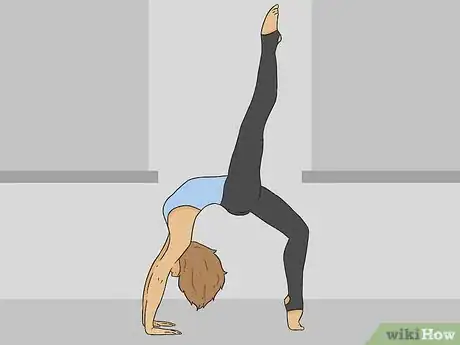
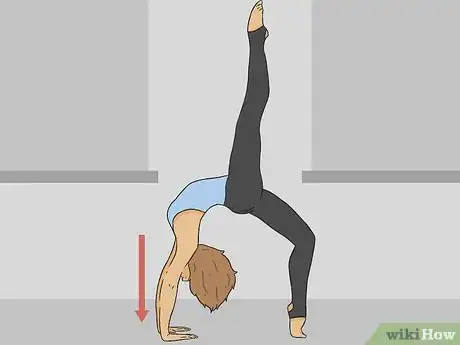
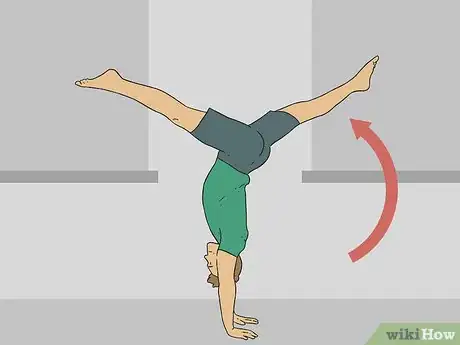
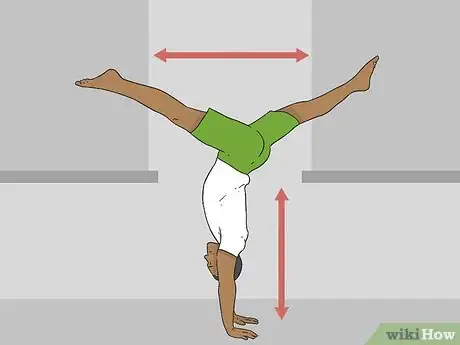


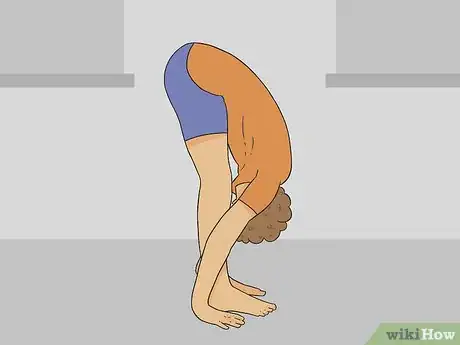

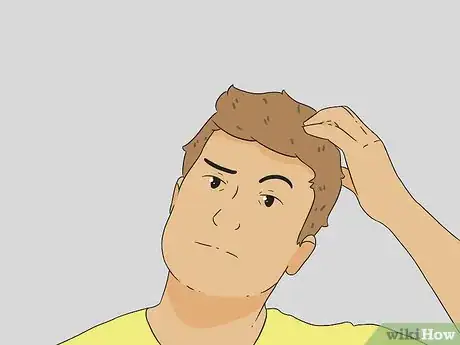



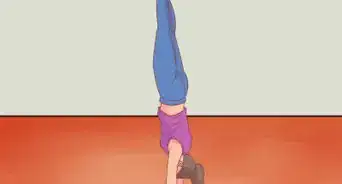
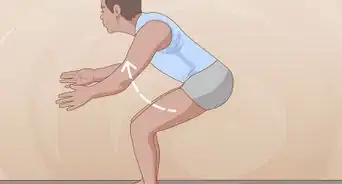


-Step-14-Version-2.webp)










